-
收藏模板下载模板
- 模板信息
- 更新时间:2023-09-22
- 字数:约12348字
- 页数:约7页
- 格式:.doc
- 推荐版本:Office2016及以上版本
- 售价:5 金币 / 会员免费
您可能喜欢的文档

新人教版高中英语必修2Unit 2 Wildlife Protection-Listening and Speaking教案
This lesson is about wildlife protection. The listening and speaking is about “How to protect endangered wildlife ?” Faced with the facts and numbers of wildlife loss, people begin to detect the reasons, then people such as the celebrities (Prince William and Yao Ming) are calling on to protect them. So students are guided to enhance the awareness of protecting wildlife and try to take part in some volunteer activities of protecting wildlife.1. Predict the content by using visuals. 2. Learn to use the sentences such as “I’m concerned about.... But now they are in danger. I want to know the reasons/why./ What can we do to protect them ?3. Learn from the stars like Prince William and Yao Ming and enhance the awareness of protecting wildlife.4. Guide students to try to put forward the solutions to the problems of wildlife protection and then discuss them with partners and present the results of discussion.5. Master the pronunciation of stressed syllables.1. Learn from the stars like Prince William and Yao Ming and enhance the awareness of protecting wildlife.2. Guide students to try to put forward the solutions to the problems of wildlife protection and then discuss them with partners and present the results of discussion.3. Learn to use the sentences such as “I’m concerned about.... But now they are in danger. I want to know the reasons/why./ What can we do to protect them ?4. Master the pronunciation of stressed syllables.Part A Listening and Speaking--- How to save endangered wildlifeStep 1 Lead in1. Point at the pictures on P14 and ask Q1: What message do these posters share?

新人教版高中英语必修2Unit 2 Wildlife Protection-Reading and Thinking教案二
The theme of this unit is human and nature, focusing on the theme of wildlife protection. Nature is a complex ecosystem, in which there are delicate balance between animals and plants. Because of the role of the food chain, the extinction of one species will produce influence, causing a series of chain reaction. Large scale extinction of species will have a serious and even irreversible impact on the ecosystem, resulting in immeasurable losses. Therefore, it is of great significance to protect wild species. To protect wild species is to protect human beings themselves. The motto of this unit is "when the buying stops, the killing can too,” which is a public service advertising slogan to protect wildlife. It tells people that every rhinoceros horn, every fur, every bowl of shark fin soup, every Ivory product, and every tiger bone product, etc. consumed by human beings, are innocent wild animals slaughtered behind them. The mission of wild aid is to ban illegal trade in endangered wildlife and mitigate climate change. It aims to educate the public to reduce the consumption demand for endangered wildlife products through public publicity and improve the awareness of environmental protection.1. Improve the awareness of wildlife protection by acquiring the knowledge of wildlife protection.2. Focus on environmental protection and protection of all lives.3. Analysis of the living environment of wild animals with appropriate thinking mode.4. Skillfully use the vocabulary and grammar knowledge of this unit to cultivate self-study ability according to the unit content5. Develop cooperative learning ability through discussion and other ways1. Enable the Ss to talk about the current situation of wild animals.2. Guide the Ss to summarize the main idea of each paragraph as well as the main idea of the text.

新人教版高中英语必修2Unit 2 Wildlife Protection-Reading for Writing教案二
This lesson aims at making a poster about protecting wildlife after reading some posters. During reading students are guided to understand the content and try to summarize the posters with one sentence. Then students are guided to try to make a poster about protecting wildlife.1. Read the two posters and try to understand the summary sentences.2. Look at the two posters and try to understand what emotions they express.3. Try to summarize the features of posters4. Try to make a poster about wildlife.1. Look at the two posters and try to understand what emotions they express.2. Try to summarize the features of posters3. Try to make a poster about wildlife.Step 1 Lead inLook at the the posters on the textbook and ask:Which emotions do the posters communicate ?Step 2 Read the poster and answer the questions.1. What do you think of the animals in the poster on the left ?I think it is frightening and ugly.2. Why do we should protect the ugly animals ?All species--the good, the bad, and the ugly-- should be treated equally.The world needs all kinds--without variety, our planet cannot survive.3. Why are billions of trees being cut down every year ?To make paper for humans.4. What result will be lead to after the trees are cut down ?A lost of animal homes are being destroyed./The habitat of wildlife is being destroyed.Step 3 Find the feature of posters1. What does each poster use to stir up emotions ?On the left, it makes us a little frightened and it looks a little ugly, but it can activate our curiosity--What is it? And What is wrong with it?On the right, it makes us feel a little sad and want to protect them.

新人教版高中英语必修2Unit 2 Wildlife Protection-Discovering Useful Structure教案二
2.表示现阶段正在进行的被动动作(该动作在说话的瞬间未必正在进行)。Many interesting experiments are being carried out these days.(说话时,并不一定正在进行)3.表示一种经常性的被动行为,常和always,constantly 等表示频度的副词连用,这种用法常常带有赞扬或厌恶的感情色彩。He is always being praised by the leader.4.表示按计划或安排主语将要承受谓语动词所表示的动作(仅限于少数及物动词)。A party is being held tonight.Step 4 Special cases1.像take care of, look after, talk about, think of等动词与介词构成的短语用于现在进行时的被动语态时, 其中的介词不可省略。The ways to stop illegally hunting are being talked about. 2.可与部分情态动词连用,表示对正在发生的事情的推测。She may be being punished by her mother.3.有时可表示按计划或安排将要进行的一个被动动作。A celebration is being held this weekend for his success.4.某些表示“状态、心理活动、存在”等的动词,如have,want,need,love,一般不用现在进行时的被动语态,而常用一般现在时的被动语态。With the population increasing,more land is needed.5.“be+under/in+n.”可表示现在进行时的被动意义。My computer is under repair.=My computer is being repaired.

新人教版高中英语必修2Unit 2 Wildlife Protection-Discovering Useful Structure教案一
The activity topic of this section is "report an ongoing event", and the structure is the passive voice of present continuous tense. Rare wild animals are suffering from large-scale poaching, and species are on the brink of danger. Rescue operations are underway. "Being" and "suffering" are the meanings of the present progressive passive voice.The usage of present progressive passive voice is of great importance in writing a good discourse and appreciating some difficult language items, so it is vital to master it and use it flexibly in a context.1. Motivate Ss to deepen the understanding of the usage of present progressive passive voice in a fixed context.2. Enable Ss to master the usage of present progressive passive voice and use it flexibly in a context.3. Lead Ss to construct sentences or appreciate sentences used master it and use it flexibly in a context.1. Help students to appreciate the function of the usage of present progressive passive voice in a sentence2. Instruct students to write essays using the proper usage of present progressive passive voice.Look at the picture and tell me what are workers doing? What is the house being done?
- 查看更多相关Word文档
Wildlife Protection说课稿3篇
必修二unit4说课稿一
Unit 4 Wildlife protection
Warming-up & Pre-reading
各位老师大家好!很高兴今天能够在这里与大家分享我的课堂。
我的说课主要分为五个部分:教材分析,教学目标,重难点分析,教学方法,和教学过程。

教材分析
我说课的内容是高中英语必修二的第四单元。本单元是有关于野生动物的保护。随着经济的发展,环境问题越来越突出,人与自然如何和谐共处成为了我们必须面对的问题。作为高中生,应该了解野生动物保护知识,并确立环保观念。希望通过对本单元的学习,能够让学生了解到那些濒临灭绝的野生动物的生存现状,并提高他们保护野生动物的意识。与此同时,希望学生能够知道如何去保护野生动物。这节课是本单元的第一课时,是针对本单元的warming-up和pre-reading的展开的,正如我们所知道的,每一单元的warming-up和pre-reading都是对本单元所学习的中心内容起到铺垫的作用,所以希望通过这节课,可以激发学生对学习本单元以及学习英语的兴趣。
教学目标
这节课的教学目标一共分为三部分:
语言知识目标
1)即让学生对野生动植物的生存现状及其濒临灭绝的原因有所了解;
2)能从这部分内容中学会并使用一些本单元的重点词汇和短语:die out, in peace, in danger 等。
二,能力目标
1)锻炼及提升学生根据标题和图片预测课文内容的能力;
2)锻炼口语表达能力;
3)提升团队合作意识。
三,情感目标
通过对野生动植物生存现状及其数量减少的原因的了解,让学生意识到保护动植物、保护环境的重要性,同时要对大自然的给予心存感恩,另外,学生能够体会到人类在保护环境中的责任,并意识到人类和环境和谐相处的重要性。
重难点分析
本课的教学重点是帮助学生深入了解保护野生动物的重要性,思考动物保护的多种方式。学习重点句型和短语。如重点词汇:wild,decrease,loss,reserve;重点短语:die out,in peace,in danger;重点句型:This is wildlife protection is all about。
本课的教学难点是训练学生获取信息,处理信息,思考问题,解决问题的方法。以及使学生能够使用目标语言表达自己的观点。
教学方法
正如我们所知,国家标准课程改革要求建立以学生为中心的教学模式。而且学好英语,要求教师能够帮助学生提高他们的语感。所以,通过对教材内容以及教学目标的分析,我决定采用以任务型教学为主,交际教学法为辅的教学方法。同时使用多媒体辅助教学,增加课堂教学的生动性。
教学过程
Step I. Lead-in. (8mins)
Greet to the class. And the teacher canask Ss some questions to lead to the new unit.
T: Where do we often see the animals?
Ss: In the zoo…
T: Are these animals all in the zoo?
Ss: No, some of them are in the zoo.
T: And the others?
Ss: In the wild maybe.
T: Yes…
Task 1. Brainstorm. (Group work; 5mins)
Ask Ss work in group to think about thewords related to animals as much as they can, such as milu deer, panda, tiger,die out, in danger. Then compare their list with other group.
Purpose of my design: (1) To catch Ss’ attention about the topic.
(2) And proper competition can arouse theSs’interest in English learning.
Step II. Warming-up (20mins)
Let Ss discuss the questions on the ppt.(Questions: Do you know top 10 most endangered animals in China? And what arethey?).
After discussion, the teacher shows theanswers on the ppt.
Then let Ss read the paragraph and reportin the Warming-up part. And complete the task1.
Task 1. Question discussion. (Group work;15mins)
Questions: 1. What other endangeredspecies do you know of?
2. Do you know any wildlife that has disappeared?
3. Why are they in danger?
Ask Ss to discuss these questions and makea conclusion. Then choose some of them to make a presentation of theirconclusion. Try to let them use the new phrases like die out, in peace and indanger. And then show them some reasons of the third question on the ppt.
Purpose of my design: (1) To get to knowthe situation of endangered animals.
(2) To have a better understanding aboutthe importance of wildlife protection.
Step III. Pre-reading. (15mins)
Task 1. Role-play. (Pair work; 10mins)
Ask student A to play an animal, andstudent B to play a reporter. B try to interview A about his feelings andsuggestions about what our human beings should do.
Useful expressions: I’m sorry to hear that…
I am afraid that…
It is very nice of you but…
It is a shame that…
Why didn’t you tell me that…?
Thank you very much but…
Let Ss go through the questions in thePre-reading part. And ask Ss to discuss what the relationship between peopleand wildlife should be, and what we can do to protect endangered animals. Thenpresent the answers on the ppt.
Purpose of my design: “Task-based” teaching method is used here to developthe Ss’ability of communicating with each other. And also their ability ofco-operation will be well trained.
Step IV. Homework. (2mins)
Review the new words and phrases learnedin this lesson.
Find information about WWF and what wehave done to protect endangered animals on the Internet.
Purpose of my design: Homework is soimportant and necessary for to master the knowledge they learned after class.It will check whether the Ss achieve the teaching aims.
必修二unit4说课稿二
Good morning, ladies and gentlemen. I’m Gu Huizhen. It is my pleasure to be hereto present my teaching plan. The content of my lesson is How Daisy learned tohelp wildlife protection.
Six parts are covered in the plan, theyare analysis of students, teaching material, teaching objectives, teachingmethods, teaching procedure, and teaching reflections. I.First, I’ll give a brief analysis of students.
The student of grade 7 in senior highschool are around
16. At this age they have laid a goodfounddation of knowledge and reading skills . They are active in class andcurious about everything around them.
II.Next, analysis of teaching material
New Senior English ForChina Student’s Book 3 was published by People’s Education Press in 2013 and it is basedon functional-notional syllabus. How Daisy learned to help wildlife is the 2ndpart of this unit, it introduces why we need wildlife protection and how weprotect the wildlife. it is related to our real life, most students areinterested in it.
III. Analysis of teaching objectives
Based on the analysis of the students andteaching materials,the teaching objectives are as follows.
Knowledge objectives:Words and phrases:carpet, fur, mercy, in relief, burstinto laughter, protect…from, pay attention to ;To know thesituation that endangered animals are facing and measures we could take.
Ability objectives: To predict informationthrough title and pictures; To retell the passage with the help of mind map.
Affection objectives:To arouse students’ awareness of wildlife protection; Tolearn to cooperate with others. IV. Part 4 analysis of teaching approach
Task –based language teaching approach will beapplied in this class in order to achieve the objectives effectively. V. let’s come to the most important part,analysis of teaching procedure
Based on the basic principle of TBLTapproach . I am going to apply PWP model, it includes pre-task, while-task andpost-task.
In pre-task, 3 steps are included.
Step 1,I will ask s to think of endangeredanimals, then I will show some pictures . Step 2 , I will ask s the reasons ofdisappearing.Step 3, Task-presentation, make a poster. In while-task,
First of all, I will ask s to predict whatthe passage is mainly talking about with the help of title and pictures in
1’. After predicting, I will give them 5’ for skimming the whole passage to get themain idea of the first three paragraphs, before that I will tell them payattention to the first and last sentences in each paragraph .
Next , 2’ for scanning para1 and tick the correctanswers. And I will tell them read the answers first. 2’ will be given for scanning para 3’ and finish the table. At last, 3’ to scan the 3rd paragraph and answer thequestions with the help of useful phrases .After reading, I will ask studentswork in groups to list at least three ways to protect wildlife.
In post-task,
Students finish their poster with the helpof model, and present their poster in class.
VI. Teaching reflections
Learned-centered; based on the real life;interactive activities.
必修2uni4说课稿三
Lesson Draft of Wildlife Protection
Good morning, ladies and gentlemen. It’s my great honor to be here, sharing mylesson with you. First, let’s watch a short video for 30 seconds andguess what subject I’lltalk about. Yes, you got it “wildlife”. Now I’ll give a short speech in the followingaspects: the analysis of the teaching materials, the teaching aims, theteaching important and difficult points, the teaching and learning methods, theteaching procedures, and the teaching reflection .
First of all, let’s analyze the teaching materials.According to the new standard curriculum and the syllabus, interest is thefirst teacher to the Ss. Warming up is the first step to motivating the Ss’ interest, leading to the successfulaccomplishment of the whole teaching task. It introduces the theme of the unitand gets the Ss well prepared for the study of it. The content of my lesson isWildlife protection from Senior English Book 2 Unit 4 Section 1 Warming up. Inaddition to the original materials, I’ll add some simple listening materials.
After studying the teaching materials andanalyzing the rule of children’s growing of mind, I’ll lay my teaching aims on the following 3goals. 1.Knowledge goal:
After this period of study, the studentscan know something about wildlife and the present situation of some endangeredspecies . 2.Ability goal:
The new standard curriculum demands weshould improve the Ss’ability of listening, speaking, reading and writing, especially listening andspeaking, which play an important role in English learning.
Besides, as a modern teacher, I aim atimproving the Ss’ability of self-study as well as cooperation with others. Try to develop theircreativity and improve their skills of communicating. 3.Emotion goal:
After this period of study, the Ss canraise the awareness of protecting wildlife and the environment.
Then, what are the teaching important anddifficult points?
I always stress the importance of the Ss’ motivation of study. So I’ll spare no effort to light up theirinterest, which is the key to success. What’s more, curiosity can drive them toexplore further. Yet taking the actual state of my Ss into consideration, theSs from the countryside may find it hard to talk about the abstract subject,which seems somehow a little far from their daily life. It’s necessary for us teachers to help themovercome the psychological pressure in communicating. Therefore, as theirguide, organizer, helper and partner of this activity, I must smooth away theirobstacles.
转载请注明出处!本文地址:
https://www.lfppt.com/worddetails_88965725.html最新说课稿文档
-
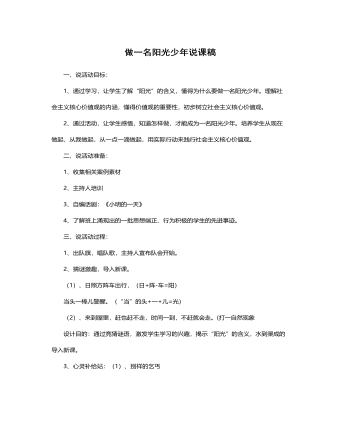
做一名阳光少年说课稿
1、紧密联系学生的生活实际,所选材料、所有活动均本着为主题服务的原则。2、形式多样化。通过心灵补给站、我来当编剧、心动不如行动等丰富多彩的活动,激发学生的热情,充分发挥他们的主体性。3、用生活中的真人真事激励他们,震撼他们的心灵,对学生进行教育,让他们得到感悟。五、说评价方式:要真正发挥主题队会的教育作用,千万不能把主题队会开成“检讨会”、“批评会”。兴趣是最好的老师,在课堂上,学生有了兴趣,才会有学习的动机,所以,在教学过程中,我努力把学生当作一个平等的朋友来对待,对于学生的回答进行评价时,本着“多表扬少批评,多鼓励少指责”的原则,尽量不用指令性、批评性的语言,最大限度的挖掘学生的优点,进行激烈性评价。
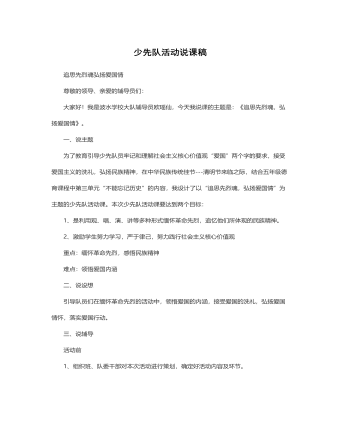
追思先烈魂,弘扬爱国情说课稿
环节四深入实践——弘扬爱国情爱国不是一句口号,要将爱国情怀落实到行动中去,队员们在各队队长的组织下,商讨出了落实方案。1、第一小队和第二小队组成了先烈故事演讲团,利用班会十分钟的时间,在三四年级宣讲先烈故事。2、第三小队和第四小队组成了创编小能手,编唱了爱国童谣、爱国拍手歌,告诉大家,爱国无处不在,爱国要从小事做起。3、第五小队和第六小队编写的爱国倡议书,提倡大家让爱国从口号落实到行动。4、全体队员共同宣誓:时刻准备着,为共产主义事业而奋斗,将活动推向了高潮。环节五大队辅导员总结“风雨沧桑,多遭铁蹄践踏,未有沉沦终奋起;荡涤污浊,重聚华夏精魂,披荆斩棘勇向前。”让我们牢记自己是中国人,怀一颗中国心,明确方向,努力奋斗,早日实现自己的梦想。
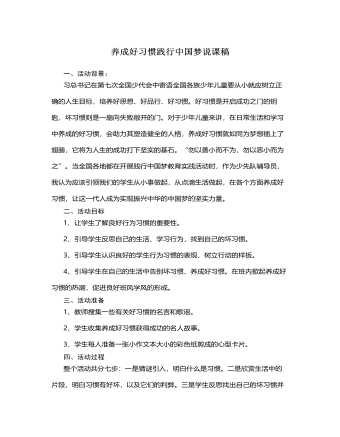
养成好习惯践行中国梦说课稿
第七步:全班学生一起倡读承诺书:(课件出示)我们都是小学生,培养习惯最要紧;上课应当专心听,积极开动小脑筋;作业认真仔细做,按时完成交得勤;有了错误要订正,知识才能学得清;人生要有好习惯,我们牢牢记心上。最后请学生把自己要养成的好习惯写在心意卡上,写好后粘贴在教室后面的园地里,互相督促,使得此次活动教育延续课后,直至影响一生.5、活动效果及反思此次活动开展后,学生们增强了对自身的认识,很多学生下决心改掉自身的坏习惯,并逐步采取了实际行动,从身边的小事做起,而且在学生中间还兴起了互相帮助、互相指正、争相进步的热潮。通过此次活动我也切实的体会到养成教育要开展就要落到实处,从实际出发,让学生亲自去感受,去体会,并且要持之以恒的做下去。同时作为老师更应该有一颗敏感热情的心,随时发现学生身上的闪光点与不足,多指正、多指点、多鼓励、多表扬,做到时时处处皆教育,这样才能赢得孩子,做好教育。
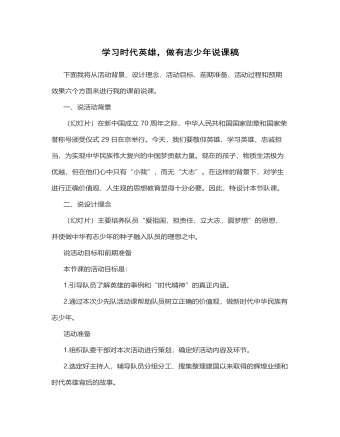
学习时代英雄,做有志少年说课稿
一、说活动背景(幻灯片)在新中国成立70周年之际,中华人民共和国国家勋章和国家荣誉称号颁受仪式29日在京举行。今天,我们要敬仰英雄、学习英雄、忠诚担当,为实现中华民族伟大复兴的中国梦贡献力量。现在的孩子,物质生活极为优越,但在他们心中只有“小我”,而无“大志”。在这样的背景下,对学生进行正确价值观、人生观的思想教育显得十分必要。因此,特设计本节队课。二、说设计理念(幻灯片)主要培养队员“爱祖国,担责任,立大志,圆梦想”的思想,并使做中华有志少年的种子融入队员的理想之中。说活动目标和前期准备本节课的活动目标是:1.引导队员了解英雄的事例和“时代精神”的真正内涵。2.通过本次少先队活动课帮助队员树立正确的价值观,做新时代中华民族有志少年。
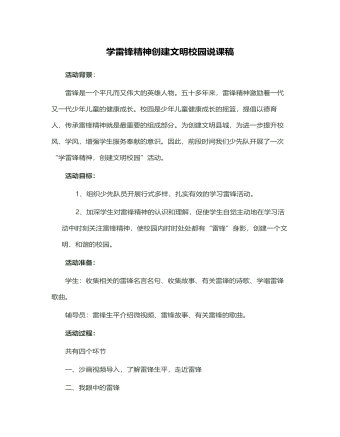
学雷锋精神,创建文明校园说课稿
雷锋精神是什么?这一环节是让学生用简单的词语或句子概括。通过这一活动,让学生概括出雷锋精神的内涵:像无私奉献、乐于助人、为人民服务、勤俭节约、尊老爱幼、勤奋好学、干一行爱一行、言行一致等等都是雷锋精神的体现。我们少年儿童是中国的未来和希望,雷锋精神的发扬和光大,创建文明校园的任务就落在他们的肩上,所以在这里我还设计了为发扬雷锋精神,创建文明校园“我该怎么做”这样的问题,目的就是让他们一起行动起来,学雷锋做好事,并制作了“荣誉”旗,奖励身边的好人好事。活动延伸:这里我设计了一个角色游戏活动——我要义卖献爱心,这个游戏学生们表现得非常积极,他们收集了自己不要的小文具或小玩具,将他们拿到集市上去卖,卖东西获得的钱,捐给王奶奶的孙女,因为王奶奶的孙女生病了,无钱治病。我觉得这个游戏使学生们懂得,一个人只要有爱心,只要愿意去帮助别人,无论什么方式都行,而且在游戏活动中孩子们体会到了帮助别人是一件多么多么快乐的事呀。
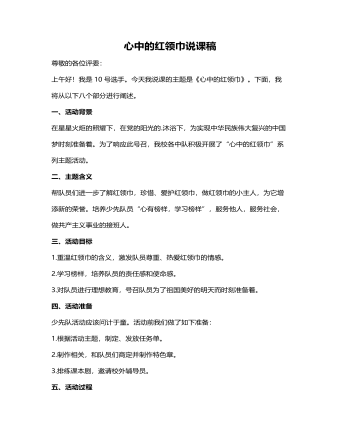
心中的红领巾说课稿
1.学习“最美红领巾”。图文结合,学习“美德少年”刘华婷、刘颖等人的先进事迹。2.记录“平凡红领巾”。展示队员们活动前精心准备的“随手拍”,发现普通队员在日常生活中的闪光点。3.填写“我为红领巾添光彩”心愿卡,对学生进行理想教育。4.齐唱《红领巾之歌》,点燃信念火种。5.辅导员对此次活动进行总结,并颁发特色章。(出示三个特色章图标)六、活动延伸红领巾精神需要代代相传,珍爱红领巾的意识需要时时提醒,本次活动后,我们会开展“小小新四军”、“鲜艳的红领巾”等后续活动,帮助队员们将红领巾精神永远铭记在心。七、引导要点四年级队员具备一定的活动能力和经验,通过课本剧的亲身体验、心愿卡的真情表达等多种方式的运用,引导队员热爱红领巾,以红领巾精神指引自己健康成长。八、活动评价本次活动,队员们受到了良好的教育。但是四年级队员自我约束能力不够强,缺乏持久性,萌生的意识和激情往往只停留在活动时,不能在活动后内化为自觉行为,这些问题有待探究。
今日更新Word
-

精选高中生期末评语
1、该生学习态度端正 ,能够积极配合老师 ,善于调动课堂气氛。 能够积极完成老师布置的任务。学习劲头足,听课又专注 ,做事更认 真 ,你是同学们学习的榜样。但是,成绩只代表昨天,并不能说明你 明天就一定也很优秀。所以,每个人都应该把成绩当作自己腾飞的起 点。2、 你不爱说话 ,但勤奋好学,诚实可爱;你做事踏实、认真、为 人忠厚 ,是一个品行端正、有上进心、有良好的道德修养的好学生。在学习上,积极、主动,能按时完成老师布置的作业,经过努力 ,各 科成绩都有明显进步,你有较强的思维能力和学习领悟力,学习也有 计划性,但在老师看来,你的潜力还没有完全发挥出来,学习上还要有持久的恒心和顽强的毅力。
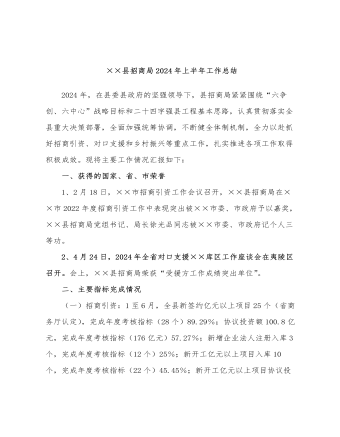
××县招商局2024年上半年工作总结
二是全力推进在谈项目落地。认真落实“首席服务官”责任制,切实做好上海中道易新材料有机硅复配硅油项目、海南中顾垃圾焚烧发电炉渣综合利用项目、天勤生物生物实验基地项目、恺德集团文旅康养产业项目、三一重能风力发电项目、中国供销集团冷链物流项目跟踪对接,协调解决项目落户过程中存在的困难和问题,力争早日实现成果转化。三是强化招商工作考核督办。持续加大全县招商引资工作统筹调度及业务指导,贯彻落实项目建设“6421”时限及“每月通报、季度排名、半年分析、年终奖励”相关要求,通过“比实绩、晒单子、亮数据、拼项目”,进一步营造“比学赶超”浓厚氛围,掀起招商引资和项目建设新热潮。四是持续优化园区企业服务。
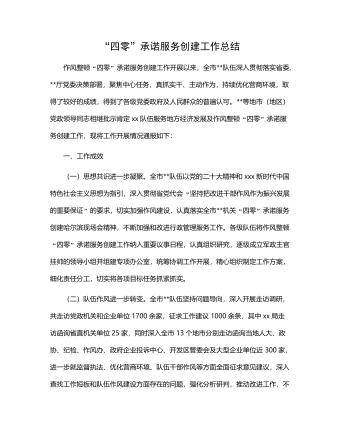
“四零”承诺服务创建工作总结
(二)坚持问题导向,持续改进工作。要继续在提高工作效率和服务质量上下功夫,积极学习借鉴其他部门及xx关于“四零”承诺服务创建工作的先进经验,同时主动查找并着力解决困扰企业和群众办事创业的难点问题。要进一步探索创新,继续优化工作流程,精简审批程序,缩短办事路径,压缩办理时限,深化政务公开,努力为企业当好“保姆”,为群众提供便利,不断适应新时代人民群众对政务服务的新需求。(三)深化内外宣传,树立良好形象。要深入挖掘并及时总结作风整顿“四零”承诺服务创建工作中形成的典型经验做法,进一步强化内部宣传与工作交流,推动全市创建工作质效整体提升。要面向社会和公众庄严承诺并积极践诺,主动接受监督,同时要依托电台、电视台、报纸及微信、微博等各类媒体大力宣传xx队伍作风整顿“四零”承诺服务创建工作成果,不断扩大社会知情面和群众知晓率。
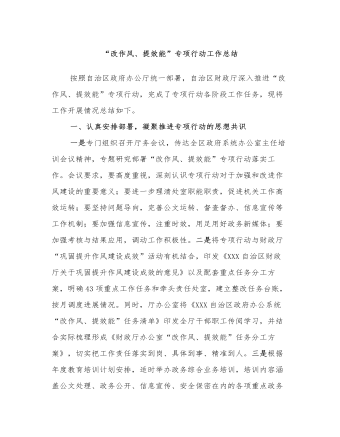
“改作风、提效能”专项行动工作总结
(五)服务群众提效能方面。一是政府采购服务提档升级。建成“全区一张网”,各类采购主体所有业务实现“一网通办,提升办事效率;全面实现远程开标和不见面开标,降低供应商成本;要求400万元以上工程采购项目预留采购份额提高至采购比例的40%以上,支持中小企业发展。2022年,我区政府采购荣获”中国政府采购奖“,并以全国第一的成绩获得数字政府采购耕耘奖、新闻宣传奖,以各省中第一的成绩获得年度创新奖。二是财政电子票据便民利民。全区财政电子票据开具量突破1亿张,涉及资金810.87亿元。特别是在医疗领域,全区241家二级以上公立医疗机构均已全部上线医疗收费电子票据,大大解决了群众看病排队等待时间长、缴费取票不方便的问题,让患者”省心、省时、省力“。
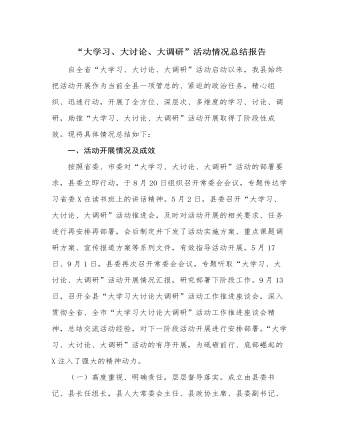
“大学习、大讨论、大调研”活动情况总结报告
一、活动开展情况及成效按照省委、市委对“大学习、大讨论、大调研”活动的部署要求,县委立即行动,于8月20日组织召开常委会会议,专题传达学习省委X在读书班上的讲话精神。5月2日,县委召开“大学习、大讨论、大调研”活动推进会,及时对活动开展的相关要求、任务进行再安排再部署,会后制定并下发了活动实施方案、重点课题调研方案、宣传报道方案等系列文件,有效指导活动开展。5月17日、9月1日,县委再次召开常委会会议,专题听取“大学习、大讨论、大调研”活动开展情况汇报,研究部署下阶段工作。9月13日,召开全县“大学习大讨论大调研”活动工作推进座谈会,深入贯彻全省、全市“大学习大讨论大调研”活动工作推进座谈会精神,总结交流活动经验,对下一阶段活动开展进行安排部署。“大学习、大讨论、大调研”活动的有序开展,为砥砺前行、底部崛起的X注入了强大的精神动力。
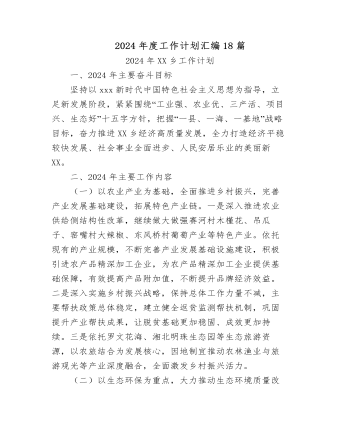
2024年度工作计划汇编(18篇)
1.市政基础设施项目5项,总建设里程2.13km,投资概算2.28亿元。其中,烔炀大道(涉铁)工程施工单位已进场,项目部基本建成,正在办理临时用地、用电及用水等相关工作;中铁佰和佰乐(巢湖)二期10KV外线工程已签订施工合同;黄麓镇健康路、纬四路新建工程均已完成清单初稿编制,亟需黄麓镇完成图审工作和健康路新建工程的前期证件办理;公安学院配套道路项目在黄麓镇完成围墙建设后即可进场施工。2.公益性建设项目6项,总建筑面积15.62万㎡,投资概算10.41亿元。其中,居巢区职业教育中心新建工程、巢湖市世纪新都小学扩建工程已完成施工、监理招标挂网,2月上旬完成全部招标工作;合肥职业技术学院大维修三期已完成招标工作,近期签订施工合同后组织进场施工;半汤疗养院净化和医用气体工程已完成招标工作;半汤疗养院智能化工程因投诉暂时中止;巢湖市中医院(中西医结合医院)新建工程正在按照既定计划推进,预计4月中下旬挂网招标。











